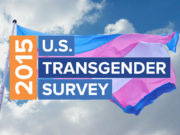Imagine being raised female and having a female body only to find out later in life that you are actually male? Not that far-fetched for the transgender community, but we are not talking about identity here, we are talking about genetics. More specifically, we are talking about women who are actually genetically male. The curious case of XY females.
“There are roughly 37.2 trillion cells in the human body.”
There are roughly 37.2 trillion cells in the human body. Each of those individual cells contains 46 chromosomes. Two of those chromosomes are X and Y. According to the binary model, women typically have two XX chromosomes, while men have one X chromosome and one Y chromosome.
So to understand how a female can be born with XY chromosomes, we need to first understand what DNA and genes are. DNA is a self-replicating material that contains the genetic information in nearly all-living things. DNA contains the code or blueprints that make up who we are. Genes are simply pieces of that code. Genes contain instructions for the body. The gene makes proteins that go out and execute the instructions in that code.
“Testosterone will work with a certain protein called the androgen receptor (AR) to make the body’s male parts.”
So typically the existence of a Y chromosome would physically create a boy. On that Y chromosome is a gene called SRY (Sex-determining Region-Y). Because Y is typically a male creating chromosome, usually only men have the SRY gene. This gene sends out the instructions to create the testes, which are important for making testosterone and other androgens that are essential to developing typical male parts. Testosterone will work with a certain protein called the androgen receptor (AR) to make the body’s male parts.
Since women generally do not have a Y chromosome, there is no SRY gene to trigger male development. Instead of making testes, females will develop ovaries that make estrogen, which pairs up with the estrogen receptor (ER) to make typically female parts.
So how can a female body develop when a Y chromosome is present?
There are conditions where the SRY and AR genes do not work properly. When this happens, the typical male body is not created. In most cases however, neither are the ovaries and in some cases the uterus. This results in a female type body, which in most cases cannot reproduce. When the SRY gene is not working the result is the XY female. This condition is known as Swyer syndrome.
“People who have Swyer syndrome are typically raised as women and have a female gender identity.”
People who have Swyer syndrome possess typically female genitalia. Some have a uterus and fallopian tubes, however the gonads (ovaries or testis) are underdeveloped or undifferentiated. Another name for the condition is 46,XY complete gonadal dysgenesis. People who have Swyer Syndrome are typically raised as women and have a female gender identity. These individuals usually require hormone replacement therapy to develop female secondary sex characteristics.
Swyer syndrome affects the development of physical sex. An individual’s chromosomes normally determine this development. In the case of Swyer, the physical sex does not match the chromosomal makeup. It is estimated that 1 in every 80,000 people have Swyer syndrome. Many do not even realize they have the condition. Most don’t find out until typical puberty doesn’t occur. Depending on the variation, some find out later in life when they are unable to have children. There have also been cases where women participating in sports and Olympic events have been found to have an XY condition after going through testing.
Other variations include Androgen Insensitivity Syndrome (AIS). This condition occurs when the androgen receptor (AR) gene is broken. This results in the XY female being born because the body’s cells won’t receive the message to make the male anatomy. XY females with AIS usually have undeveloped testes inside their bodies. There are variations where an XY female has a uterus and can become pregnant through an embryo transfer.
In Conclusion
So what we are able to conclude by the existence of XY females is that many varieties in gender can occur. It can certainly be viewed that transgender people are somewhere within the intersex spectrum. Depending on DNA, genes and receptors, there are many variations that can occur when it comes to physical sex. We can speculate that such variations can also apply to the spectrum of gender. Scientifically when it comes to chromosomes, society is quicker to accept these realities. It seems in the case of the transgender person it is when they change their appearance to match their variation is when society seems to have a problem. This view is beginning to change however, and hopefully our understanding of these variations will continue to grow.


































